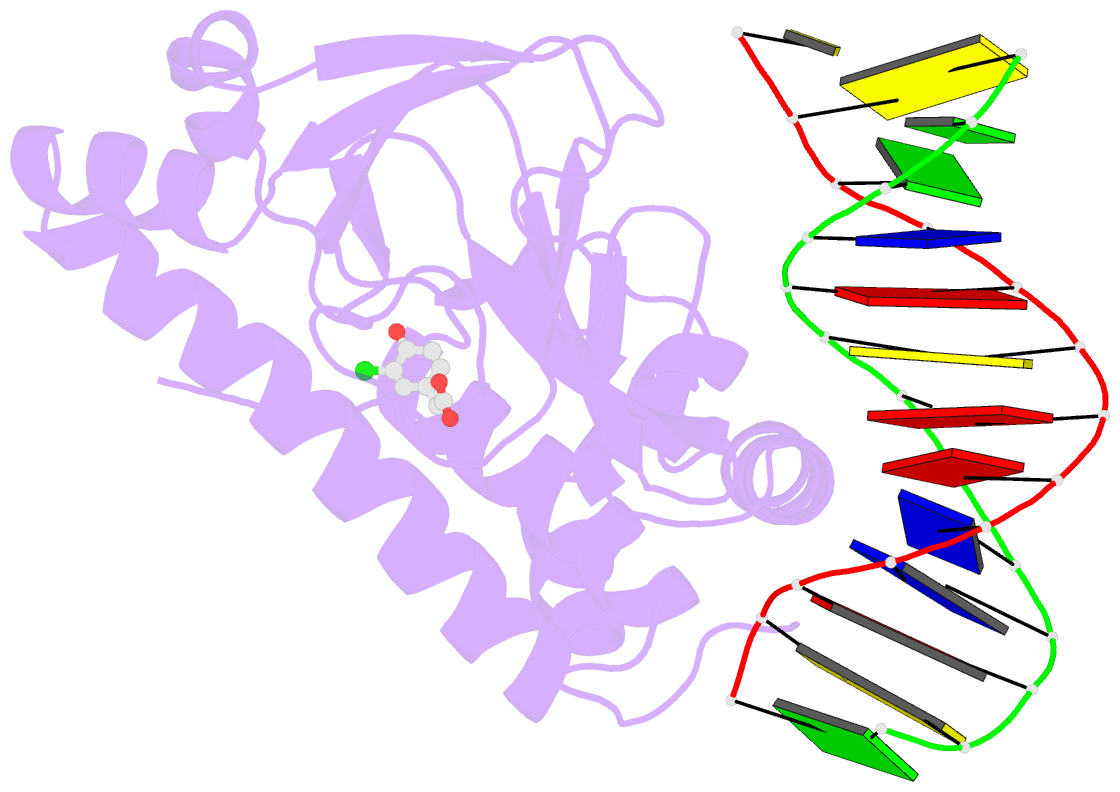Summary information and primary citation
- PDB-id
- 3e6c; SNAP-derived features in text and JSON formats;
DNAproDB
- Class
- transcription regulation-DNA
- Method
- X-ray (1.8 Å)
- Summary
- Cprk ocpa DNA complex
- Reference
- Levy C, Pike K, Heyes DJ, Joyce MG, Gabor K, Smidt H, van der Oost J, Leys D (2008): "Molecular basis of halorespiration control by CprK, a CRP-FNR type transcriptional regulator." Mol.Microbiol., 70, 151-167. doi: 10.1111/j.1365-2958.2008.06399.x.
- Abstract
- Certain bacteria are able to conserve energy via the reductive dehalogenation of halo-organic compounds in a respiration-type metabolism. The transcriptional regulator CprK from Desulfitobacterium spp. induces expression of halorespiratory genes upon binding of o-chlorophenol ligands and is reversibly inactivated by oxygen through disulphide bond formation. We report crystal structures of D. hafniense CprK in the ligand-free (both oxidation states), ligand-bound (reduced) and DNA-bound states, making it the first member of the widespread CRP-FNR superfamily for which a complete structural description of both redox-dependent and allosteric molecular rearrangements is available. In conjunction with kinetic and thermodynamic ligand binding studies, we provide a model for the allosteric mechanisms underpinning transcriptional control. Amino acids that play a key role in this mechanism are not conserved in functionally distinct CRP-FNR members. This suggests that, despite significant structural homology, distinct allosteric mechanisms are used, enabling this protein family to control a very wide range of processes.





